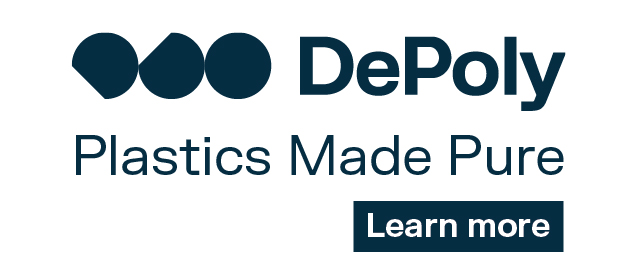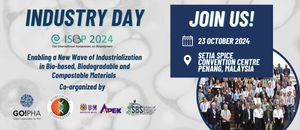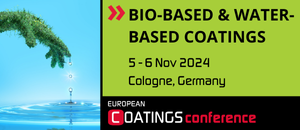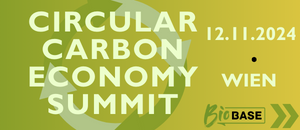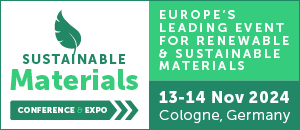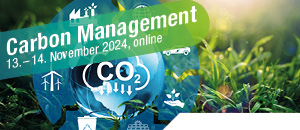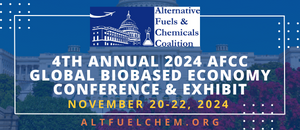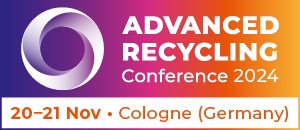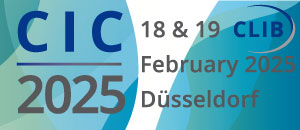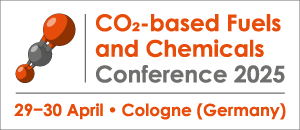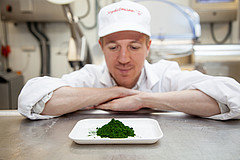
Algae (or seaweeds) already serve as a source of raw materials for stabilizers or thickening and gelling agents, such as agar, alginate, and carrageenan. However, research is also increasingly interested in their potential as a carbohydrate source for bioplastic development. These are not only biodegradable, but their properties can also help to extend the shelf life of food products packaged in them. Currently, however, the common extraction methods are very inefficient. In the EU-funded research project BIOCARB-4-FOOD, researchers are now looking for more sustainable processes for the extraction of carbohydrates from macroalgae, i.e. large algae species, and also seaweed. They are looking into the question of how these substances can be extracted from the raw material as well as how the residues of existing extraction processes can be further used and processed.
“We are looking for alternative natural resources such as algae and marine plants. Not only because they are abundant, but also because they contain a large number of potentially interesting compounds,” stated Dr. Amparo Lopez-Rubio from the Institute of Agrochemistry and Food Technology (IATA-CSIC) in Valencia, Spain, who is the coordinator of the BIOCARB-4-FOOD project.
“Already today, the algae industry is generating a turnover of approximately 7.4 billion dollars (around 6.3 billion euros) worldwide – and the industry is still growing. Due to their particular physico-chemical and biological properties, the food and pharmaceutical industries are also becoming increasingly interested in compounds that are produced from algae,” said Dr. Nadja Reinhardt from the Research Center for Bioeconomy at the University of Hohenheim, which is in charge of project communication.
Thus, a sub-task of BIOCARB-4-FOOD is obtaining novel extracts which can be used as food ingredients – far beyond the use as gelling or thickening agents. Because of the specific properties of these algae carbohydrates, also known as phycocolloids, the scientists also see the potential to use them as smart packaging materials.
Tapping into potential – for greater sustainability and competitiveness
However, current methods for extracting carbohydrates from algae are extremely inefficient, both in terms of processing time and water and energy consumption. Furthermore, the remaining biomass – usually much more than 50% of the original material – is used as compost or simply disposed of as organic waste.
The core task of the scientists in the BIOCARB-4-FOOD project is therefore to research and combine novel, environmentally friendly, more efficient extraction methods such as ultrasound, microwaves, and enzymes in order to optimize the process.
Secondly, resource efficiency is to be improved by using the biomass remaining after extraction, which is still rich in bioactive compounds, to produce carbohydrates and fibers such as cellulose and nano-cellulose.
The researchers not only focus on the marine algae species already in commercial use, but also on raw materials that have not been used at all up to now or have only been used to a limited extent, such as seagrasses. The more efficient use of raw materials is also intended to help improve the competitiveness of EU algae, seaweed, food, and non-food businesses.
Finally, the resulting products are examined for their properties such as structure, bioactivity, toxicity, and technological usability, and the sustainability of the processes is checked by means of a life cycle assessment.
Promising results
So far, the results of BIOCARB-4-FOOD are very promising: Experiments with the Mediterranean red algae Gelidium sesquipedale show that agar extraction can be considerably simplified if hot water treatment is combined with ultrasound. The extraction time can be reduced by a factor of four compared to conventional methods – and it does not significantly affect the extraction yield or the physico-chemical properties of the products.
The shorter extraction times and better yield not only reduce emissions and costs: Initial calculations show that the ecological footprint for agar production as a whole is decreased to around one-fifth.
“Unfortunately, we have only been able to test this on a laboratory scale so far,” stated Dr. Amparo Lopez-Rubio. “The companies involved in our consortium are working on upscaling so that the results obtained in our laboratories can also be transferred to industrial production.”
Plastics from algae
Most of the food we consume today is packaged in plastic – with well-known problems: As a rule, this plastic is obtained from crude oil, a limited resource. It also has a major impact on the environment, as the decomposition of most plastic waste takes more than 400 years. Even so-called compostable plastics, e.g. made of starch, require higher temperatures or higher humidity for decomposition than is the case under natural conditions.
The researchers at BIOCARB-4-FOOD are therefore working on more sustainable food packaging that has the necessary mechanical and chemical properties.
Dr. López-Rubio stated: “We must look for alternative sources of raw materials that do not compete with food production. This is why marine resources such as algae and seagrasses are very interesting. They reproduce very quickly, grow in a variety of environments and, as an alternative biomass source for bioplastics, do not interfere with food production.”
Even the byproducts of industrial extraction can be used. This is because the remaining biomass still contains sufficient bioactive compounds to produce novel carbohydrate-based extracts and fibers, such as cellulose and nano-cellulose, which can be used to develop biodegradable packaging materials, as successfully tested in the IATA-CSIC laboratory.
New extraction processes lead to more sustainable packaging
Industrially, highly purified agar extracts are usually used, which is associated with a high consumption of chemicals. If the cleaning steps are reduced, this not only reduces the consumption of chemicals: Products with new properties are also created, as e.g. proteins or polyphenolic compounds remain in the original materials.
Less purified agar extracts from G. sesquipedale thus have additional functions, such as antioxidant and antimicrobial properties, which make them interesting for various food applications: Plastic films produced from these extracts release bioactive substances and can thus contribute to food preservation, for example by slowing down the spoilage of fruit.
In addition, these films can eliminate one of the main obstacles to the use of agar in the food packaging industry: They are much more resistant to moisture than films made with highly purified agar.
Bioplastics from unwanted seaweed waste – in some cases better than those from oil
A good recycling possibility is also emerging for the waste of the Neptune Grass (Posidonia oceanica) native to the Mediterranean Sea. This plant sometimes accumulates en masse on the beaches, which has a negative impact on tourism and high disposal costs for the communities concerned.
However, the ingredients of this Posidonia waste have a great potential for developing biodegradable packaging, which is also supported by a separate patent: They are an excellent source of lignocellulose. As an additive, it leads to a significant improvement in mechanical properties in the production of starch-based bioplastics.
Posidonia cellulose can also be added to conventional plastics to improve various important functions of food packaging, such as gas and water vapor barrier, thermal, or mechanical properties. Together with a variety of bioactive substances in Posidonia extracts, which have a high antioxidant capacity, these properties also help to keep food fresh for longer.
BACKGROUND: BIOCARB-4-FOOD
The aim of BIOCARB-4-FOOD (Extraction and characterization of BIOactives and CARBohydrates from seaweeds and seagrasses FOR FOOD-related applications, extraction and characterization of bioactive substances and carbohydrates from seaweeds and seagrasses for food-related applications) is the development of practicable approaches for the utilization of biomass from seaweeds and seagrasses.
To this end, a scientific consortium from four countries is investigating how various substances can be obtained for food production through environmentally friendly, more efficient extraction processes. At the same time, these raw materials – which have so far been largely unused – are to be utilized and sustainability improved. The more efficient use of raw materials is expected to improve the competitiveness of algae, food, and non-food companies, and the extraction products will then be used as food additives or biodegradable packaging.
BIOCARB-4-FOOD is coordinated by Dr. Amparo Lopez-Rubio from the Institute of Agrochemistry and Food Technology (Instituto de Agroquímica y Tecnología de Alimentos, IATA-CSIC) in Spain. Other partners are Teagasc, the Irish Department of Agriculture and Food Development, the Norwegian research institute Nofima, and the Swedish network of research centers RISE. The University of Hohenheim’s Research Center for Bioeconomy is responsible for project communication.
BIOCARB-4-FOOD, an ERA-NET SusFood2 project, has a budget of one million euros and runs from September 2018 to September 2021.
BACKGROUND: Hohenheim Research Center for Bioeconomy
The challenges for Bioeconomy are complex and heavily dependent on research efforts. Answers can only be found if researchers work in interdisciplinary projects with other subject areas.
The task of the Research Center for Bioeconomy is to establish this interdisciplinary topic at the university in a targeted and sustainable manner and to implement it by successfully obtaining funding. To this end, it supports researchers across faculties in the application process and/or management of national and international collaborative projects, coordinates international network projects and platforms and plays a major role in the search for possible project partners, the composition of the consortium, and in the development of the project idea, the application letter, communication, and coordination with the funding organization.
BACKGROUND: Science Year 2020/21 – Bioeconomy
In 2020 and 2021, the Science Year will be dominated by the bioeconomy – and thus by a sustainable, biobased economy. The aim is to produce and use natural materials and resources in a sustainable and innovative way, replacing fossil and mineral raw materials, manufacturing products in a more environmentally friendly way, and conserving biological resources. This is more necessary than ever in times of climate change, a growing world population, and a drastic decline in species. The Bioeconomy Science Year, organized by the Federal Ministry of Education and Research (BMBF), shines a spotlight on the topic. At the University of Hohenheim in October, the monthly focus is on “Food Security – Healthy Food for All.”
Bioeconomy is the leading topic at the University of Hohenheim in research and teaching. It links the Faculty of Agricultural Sciences, the Faculty of Natural Sciences, and the Faculty of Business, Economics and Social Sciences. During the Science Year on Bioeconomy, the University of Hohenheim is hosting many events to inform the public and experts on the topic.
Source
University of Hohenheim, press release, 2020-10-30.
Supplier
Food Industry Development, Trade, Markets & the Economy (Ireland)
IATA-CSIC
Nofima AS
Research Institutes of Sweden (RISE)
Spanish National Research Council (CSIC)
Teagasc – the Agriculture and Food Development Authority
Universität Hohenheim
Share
Renewable Carbon News – Daily Newsletter
Subscribe to our daily email newsletter – the world's leading newsletter on renewable materials and chemicals





